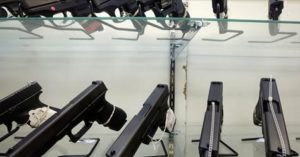1. WHY?
Why do men’s clothes have buttons on the right while women’s clothes have buttons on the left?
BECAUSE
When buttons were invented, they were very expensive and worn primarily by the rich. Since most people are right-handed, it is easier to push buttons on the right through holes on the left. Because wealthy women were dressed by maids, dressmakers put the buttons on the maid’s right! And that’s where women’s buttons have remained since.
2. WHY?
Why do ships and aircraft use ‘mayday’ as their call for help?
BECAUSE
This comes from the French word m’aidez – meaning ‘help me’ – and is pronounced, approximately, ‘mayday.’
3. WHY?
Why are zero scores in tennis called ‘love’?
BECAUSE
In France, where tennis became popular, the round zero on the scoreboard looked like an egg and was called ‘l’oeuf,’ which is French for ‘the egg.’ When tennis was introduced in the US, Americans (naturally), mispronounced it ‘love.’
4. WHY?
Why do X’s at the end of a letter signify kisses?
BECAUSE
In the Middle Ages, when many people were unable to read or write, documents were often signed using an X. Kissing the X represented an oath to fulfill obligations specified in the document. The X and the kiss eventually became synonymous.
5. WHY?
Why is shifting responsibility to someone else called passing the buck’?
BECAUSE
In card games, it was once customary to pass an item, called a buck, from player to player to indicate whose turn it was to deal. If a player did not wish to assume the responsibility of dealing, he would ‘pass the buck’ to the next player.
6. WHY?
Why do people clink their glasses before drinking a toast?
BECAUSE
In earlier times it used to be common for someone to try to kill an enemy by offering him a poisoned drink. To prove to a guest that a drink was safe, it became customary for a guest to pour a small amount of his drink into the glass of the host. Both men would drink it simultaneously. When a guest trusted his host, he would only touch or clink the host’s glass with his own.
7. WHY?
Why are people in the public eye said to be ‘in the limelight’?
BECAUSE
Invented in 1825, limelight was used in lighthouses and theatres by burning a cylinder of lime which produced a brilliant light. In the theatre, a performer ‘in the limelight’ was the Centre of attention.
8. WHY?
Why is someone who is feeling great ‘on cloud nine’?
BECAUSE
Types of clouds are numbered according to the altitudes they attain, with nine being the highest cloud. If someone is said to be on cloud nine, that person is floating well above worldly cares.
9. WHY?
In golf, where did the term ‘Caddie’ come from?
BECAUSE
When Mary Queen of Scots went to France as a young girl, Louis, King of France, learned that she loved the Scots game ‘golf.’ He had the first course outside of Scotland built for her enjoyment. To make sure she was properly chaperoned (and guarded) while she played, Louis hired cadets from a military school to accompany her. Mary liked this a lot and when she returned to Scotland (not a very good idea in the long run), she took the practice with her. In French, the word cadet is pronounced ‘ca-day’ and the Scots changed it into caddie.
10. WHY?
Why are many coin collection jar banks shaped like pigs?
BECAUSE
Long ago, dishes and cookware in Europe were made of dense orange clay called ‘pygg’. When people saved coins in jars made of this clay, the jars became known as ‘pygg banks.’ When an English potter misunderstood the word, he made a container that resembled a pig. And it caught on.
11. (Not WHY, but “WHO”) BIG CHEEKS
Bet you don’t know “Big cheeks”. Big cheeks. A grandson of slaves, a boy was born in a poor neighborhood of New Orleans known as the “Back of Town.” His father abandoned the family when the child was an infant. His mother became a prostitute and the boy and his sister had to live with their grandmother.
Early in life he proved to be gifted for music and with three other kids he sang in the streets of New Orleans. His first gains were coins that were thrown to them.
A Jewish family, Karnofsky, who had emigrated from Lithuania to the USA, had pity for the 7-year-old boy and brought him into their home. initially giving ‘work’ in the house, to feed this hungry child. There he remained and slept in this Jewish family’s home where, for the first time in his life, he was treated with kindness and tenderness. When he went to bed, Mrs. Karnovsky sang him a Russian lullaby that he would sing with her.
Later, he learned to sing and play several Russian and Jewish songs. Over time, this boy became the adopted son of this family. The Karnofskys gave him money to buy his first musical instrument; as was the custom in the Jewish families. They sincerely admired his musical talent.
Later, when he became a professional musician and composer, he used these Jewish melodies in compositions, such as St James Infirmary and Go Down Moses. The little black boy grew up and wrote a book about this Jewish family who had adopted him in 1907.
In memory of this family and until the end of his life, he wore a Star of David and said that in this family, he had learned “how to live real life and determination.”
You might recognize his name. This little boy was called: Louis “Satchmo” Armstrong.
Louis Armstrong proudly spoke fluent Yiddish! And “Satchmo” is Yiddish for “Big Cheeks”








